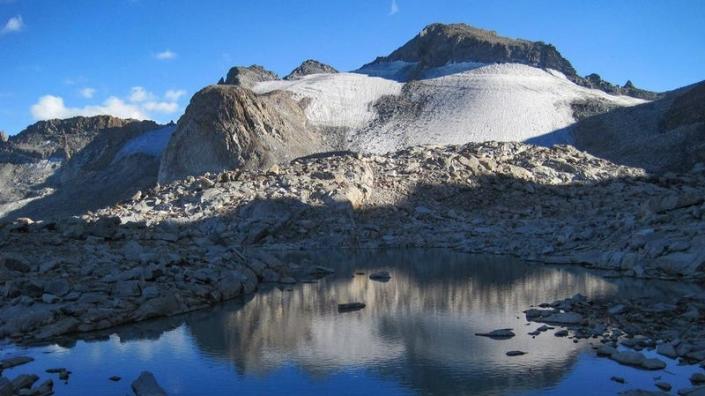
All of the glaciers in Yosemite National Park, Italy’s Dolomite mountains, the continent of Africa, and thousands of other individual ice giants are set to disappear over the next 30 years, according to a new report from the United Nations.
And, at this point in climate change, the UN says that we’re powerless to stop that loss. Under each and every climate projection model that the researchers assessed, a full one-third of glaciers located within UNESCO World Heritage sites melt away by 2050—imperiling water resources, low lying regions, and cultural practices globally.
Read more
18,600 different glaciers are located across World Heritage sites, representing about 10% of Earth’s total glacier-covered area, according to the new report. These include the world’s highest glaciers near Mt. Everest, the longest glacier (in Alaska), and the last glaciers in Africa (in Kenya, Tanzania, and the DRC). More than 90% of our planet’s glacierized land is in Antarctica, where there are no UNESCO sites. And so the area included in the UN analysis encompasses nearly all of the glaciers outside of polar ice sheet regions, in mountainous areas.
If we continue on, business as usual, then half of all these UNESCO sites will be glacier free by 2100—which is where choice does come in. Limiting climate change to the Paris Agreement goal of 1.5 degrees Celsius (2.7 degrees Fahrenheit) by sharply cutting our greenhouse gas emissions would spare two-thirds of World Heritage sites from glacier loss, according to the report. Though, there’s a 50% chance we pass that 1.5 C benchmark in just four years, according to the World Meteorological Organization. And another UN report from just last week determined that there is “no credible pathway to 1.5 C in place.”
Satellite data already shows that World Heritage glaciers are losing about 58 billion metric tons of ice every year, on average. That volume is equivalent to the total amount of water used annually in France and Spain combined, says the report. And nearly 5% of the observed current sea level rise is attributable the ice lost from those same glaciers. More melt=even higher oceans. Plus, glacier loss has the power to drastically reshapes ecosystems and human societies worldwide, like those in and around the Himalayas.
Glaciers are central to water storage and regulation in many regions. Without the seasonal flux of glacial melt and refreezing to rely on, some places could be left in perennial drought and others flooded out. For scale, nearly 2 billion people worldwide rely on water from glacier or snowpack melt for their drinking water—not to mention agriculture and hydropower needs.
“When glaciers melt rapidly, millions of people face water scarcity and the increased risk of natural disasters such as flooding, and millions more may be displaced by the resulting rise in sea levels,” said IUCN director Bruno Oberle in a press statement.
On a smaller scale, there’s also the cultural value of glaciers. They are central to some indigenous practices like those in Māori communities and the Peruvian Andes. Glaciers draw in tourism dollars, and are spectacular-to-behold natural assets. As they disappear, we lose tens of thousands (or even hundreds of thousands) of years old natural wonders that can’t be re-gained.
On a personal note: The first time I saw a glacier up close in real life, I was 23 on a backpacking trip in Olympic National Park. I hiked up to the lateral moraine of Blue Glacier and, put simply, it was transformative. I have never been particularly religious but that is the closest I’ve ever felt to a God. I sat on the cliffside and could hear something 20,000 years old moving. It creaked and groaned. The wind coming off of the ice field smelled both crisp and musty—ancient, like a frozen Library of Alexandria. I cried a lot, both in the moment and later, recalling the expanse of white against dark rock. And also because when I got home, I looked up images of what Blue Glacier had previously looked like. It had felt so giant when I was on the mountain, but in comparison to pictures from just a decade earlier, it seemed small.
According to the new UNESCO report, Olympic’s glaciers will likely last a little longer than 2050, but if nothing changes about our emissions or our global approach to climate change they’ll be gone soon too, by the end of the century. (Other projections, estimate Olympic National Park to be glacier free by 2070.)
Thursday’s glacier report comes just before the start of the UN’s yearly Climate Change Conference, called COP27. And for UNESCO, it’s a plea for global leaders to take glacier loss and climate change seriously “This report is a call to action,” said the organization’s director, Audrey Azoulay, in the news statement. “COP27 will have a crucial role,” in addressing problem of melting glaciers, she added.
Yet, meetings alone aren’t enough. 1/3 of UNESCO glaciers are already doomed. To save the rest, we need real climate solutions and immediate action.
More from Gizmodo
Sign up for Gizmodo’s Newsletter. For the latest news, Facebook, Twitter and Instagram.




